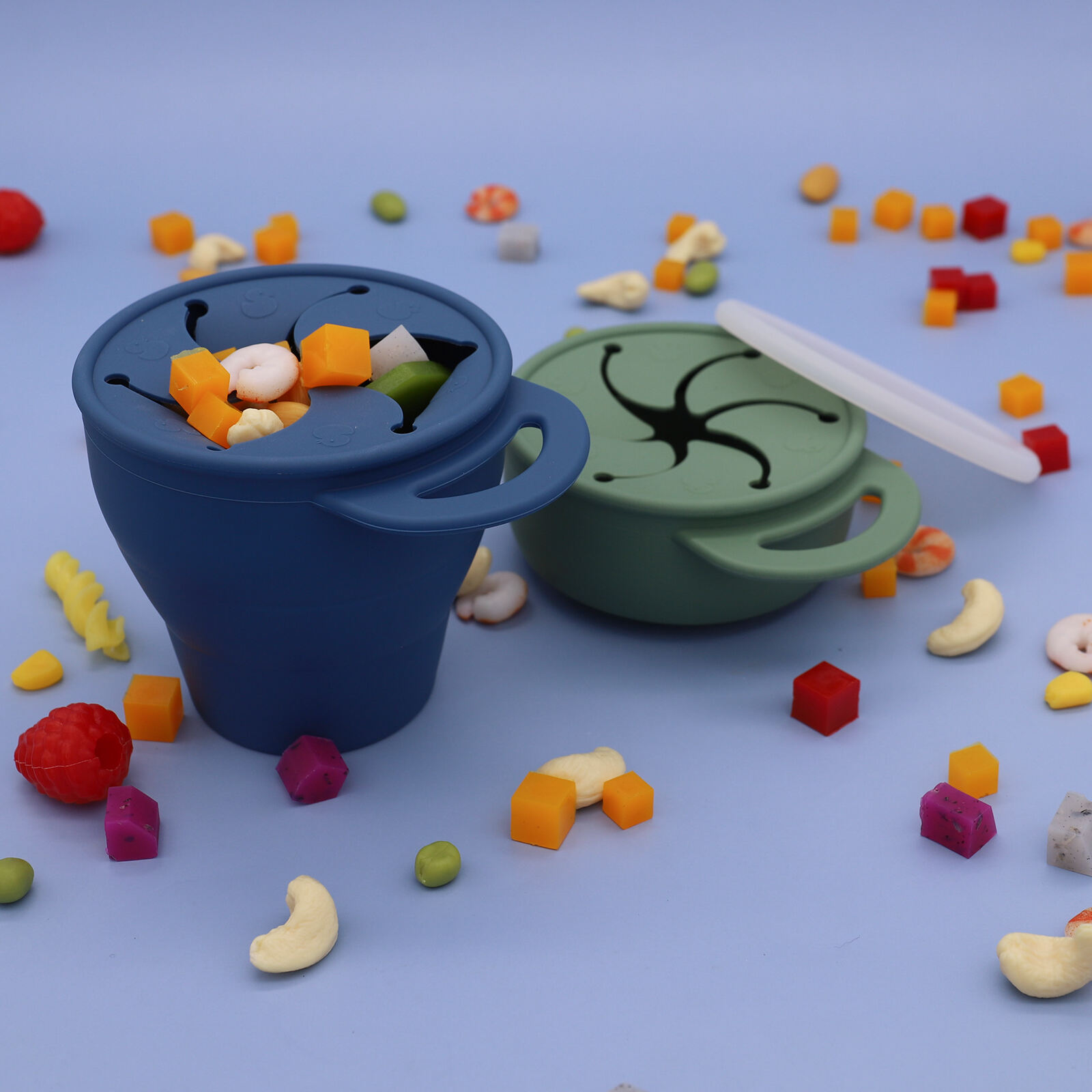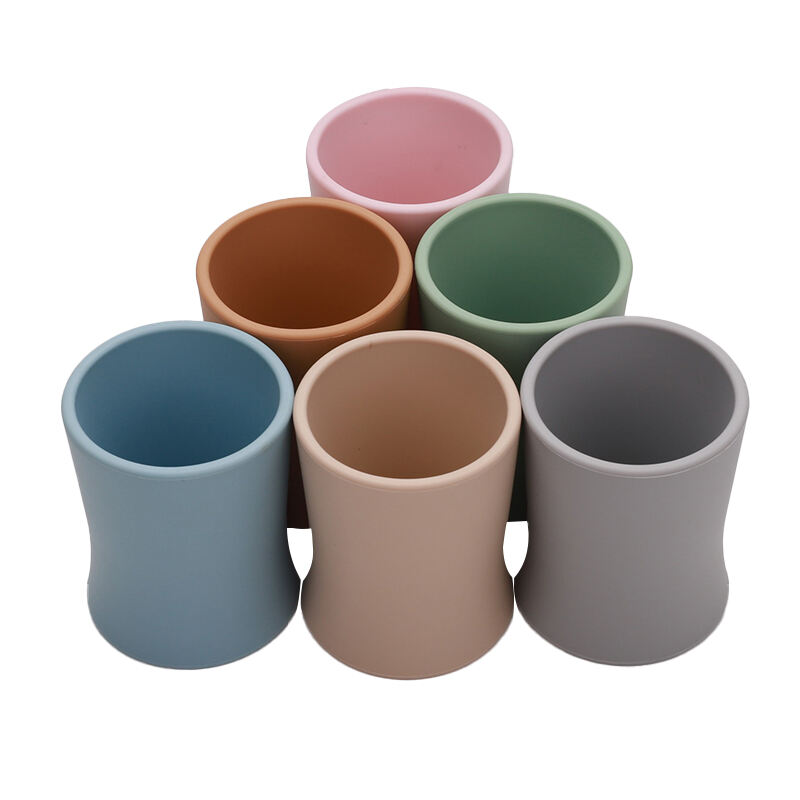The Modern Revolution in Sustainable Drinkware
In recent years, the way we consume beverages has undergone a significant transformation, with silicone cups emerging as a game-changing solution for both hot and cold drinks. These versatile containers have revolutionized our daily drinking habits, offering a perfect blend of functionality, sustainability, and style. As more people seek alternatives to traditional drinkware, silicone cups have gained tremendous popularity among environmentally conscious consumers and practical individuals alike.
The innovative design of silicone cups combines durability with user-friendly features, making them an ideal choice for various beverage consumption needs. From morning coffee runs to afternoon smoothies, these adaptable containers have proven their worth in countless scenarios, prompting a shift away from conventional glass and plastic options.
Essential Features of Premium Silicone Drinkware
Material Composition and Safety Standards
High-quality silicone cups are crafted from food-grade silicone that meets strict safety regulations. This material is free from harmful chemicals like BPA, phthalates, and other toxic substances commonly found in plastic alternatives. The medical-grade silicone used in premium cups undergoes rigorous testing to ensure it maintains its integrity even under extreme temperature conditions.
The molecular structure of food-grade silicone remains stable when exposed to both hot and cold temperatures, preventing any leaching of chemicals into your beverages. This stability makes silicone cups an exceptionally safe choice for all types of drinks, from steaming hot coffee to ice-cold smoothies.
Temperature Retention Properties
One of the most impressive characteristics of silicone cups is their ability to maintain beverage temperatures effectively. The material provides natural insulation properties that help keep hot drinks warm and cold drinks cool for extended periods. While not as long-lasting as vacuum-sealed containers, silicone cups offer adequate temperature retention for most daily use scenarios.
The insulation properties of silicone also prevent external condensation when holding cold beverages, making them comfortable to hold and preventing water rings on surfaces. This feature particularly benefits users who enjoy iced drinks during summer months or in warm climates.

Practical Advantages in Daily Use
Durability and Longevity
Unlike traditional glass or ceramic cups that can shatter upon impact, silicone cups demonstrate remarkable durability. They can withstand accidental drops, bumps, and general wear and tear without compromising their structural integrity. This resilience makes them particularly suitable for active lifestyles, outdoor activities, and households with children.
The material's flexibility allows silicone cups to absorb impact without breaking, while maintaining their original shape after compression. This unique characteristic ensures a longer lifespan compared to conventional drinkware, making them a cost-effective investment in the long run.
Portability and Storage Solutions
The lightweight nature of silicone cups makes them ideal for travelers, commuters, and outdoor enthusiasts. Many designs feature collapsible constructions that can be compressed to a fraction of their original size, saving valuable space in bags and cupboards. This space-saving aspect has made silicone cups increasingly popular among urban dwellers with limited storage space.
The flexible material also allows for easy packing and unpacking without concern for breakage. Whether you're heading to the gym, office, or embarking on a camping trip, silicone cups offer unmatched convenience in terms of portability and storage efficiency.
Environmental Impact and Sustainability
Eco-friendly Alternative to Single-use Containers
In an era of increasing environmental awareness, silicone cups represent a significant step toward reducing single-use plastic waste. By choosing a reusable silicone cup, consumers can significantly decrease their environmental footprint. One silicone cup can replace hundreds or even thousands of disposable cups over its lifetime.
The manufacturing process of silicone products generally requires less energy compared to plastic production, and silicone products have a longer useful life. This combination results in a lower overall environmental impact when compared to both disposable alternatives and certain reusable options.
End-of-Life Considerations
While silicone is not biodegradable, it is recyclable through specialized facilities. Many manufacturers offer recycling programs for their silicone products, ensuring proper disposal and processing at the end of their useful life. The durability of silicone means these cups typically last for many years before requiring replacement, reducing the frequency of disposal.
When properly cared for, silicone cups can maintain their quality for extended periods, minimizing the need for frequent replacements and thereby reducing waste. This longevity factor contributes significantly to their overall environmental benefits.
Maintenance and Care Instructions
Cleaning Methods and Best Practices
Maintaining silicone cups is straightforward and requires minimal effort. The non-porous surface prevents staining and odor absorption, making them easy to clean with regular soap and water. Most silicone cups are dishwasher-safe, adding to their convenience factor for daily use.
For deeper cleaning, users can periodically boil silicone cups to sanitize them thoroughly. The material's heat resistance ensures it maintains its shape and properties even after repeated exposure to high temperatures during cleaning processes.
Storage and Long-term Care
Proper storage can significantly extend the life of silicone cups. While the material is highly durable, avoiding prolonged exposure to direct sunlight and extreme temperatures when not in use can help maintain its quality. Storing cups in a clean, dry place prevents dust accumulation and maintains hygiene standards.
Regular inspection for any signs of wear or damage ensures optimal performance and safety. While silicone cups are highly resistant to damage, addressing any issues promptly can prevent potential problems and extend their usable life.
Frequently Asked Questions
Are silicone cups safe for both hot and cold beverages?
Yes, food-grade silicone cups are completely safe for both hot and cold beverages. The material is designed to maintain its structural integrity and chemical stability across a wide temperature range, typically from -40°F to 400°F (-40°C to 204°C).
How long do silicone cups typically last?
With proper care and regular use, silicone cups can last for several years. The exact lifespan depends on usage patterns and maintenance, but many users report their cups remaining in excellent condition for 3-5 years or more.
Can silicone cups develop odors over time?
While silicone is naturally resistant to odor absorption, strong-smelling beverages might temporarily leave traces. Regular cleaning and occasional deep cleaning through boiling or baking soda treatment can effectively eliminate any lingering odors.
What makes silicone cups better than plastic alternatives?
Silicone cups offer several advantages over plastic, including better durability, higher heat resistance, no harmful chemical leaching, longer lifespan, and superior environmental sustainability. They also maintain their shape and properties better over time compared to plastic containers.

